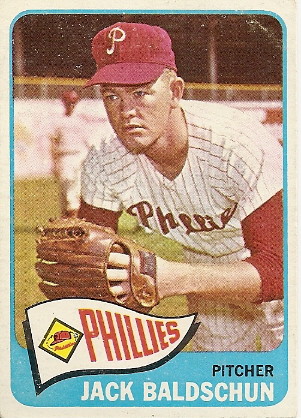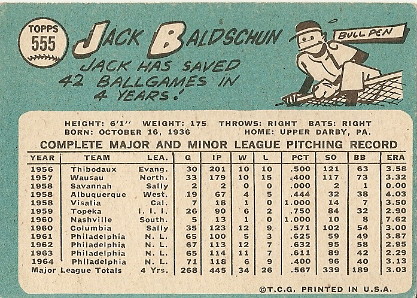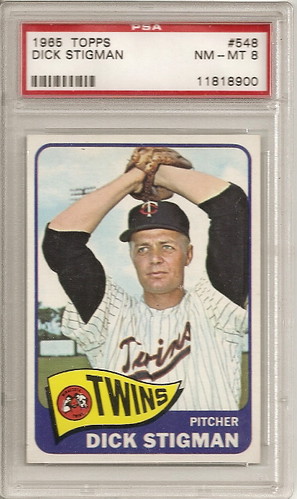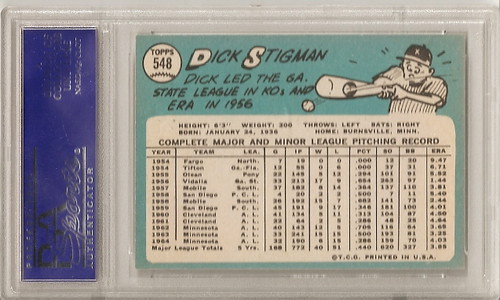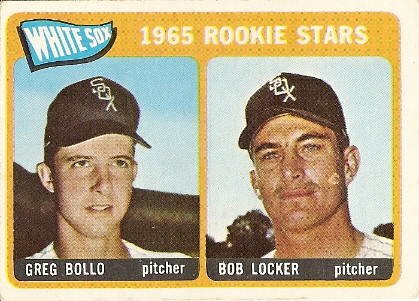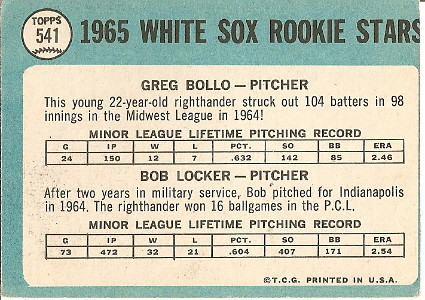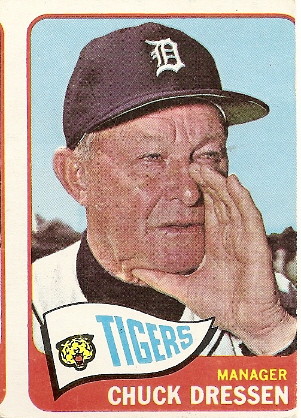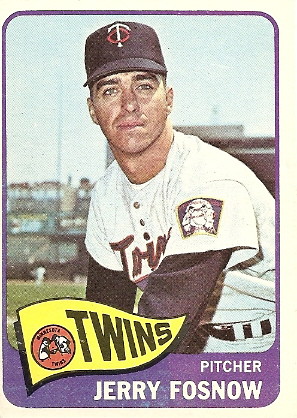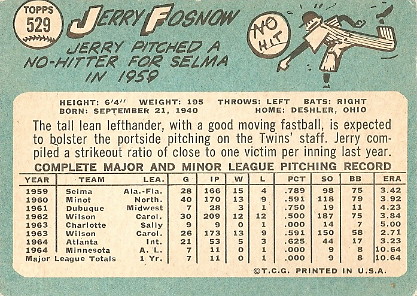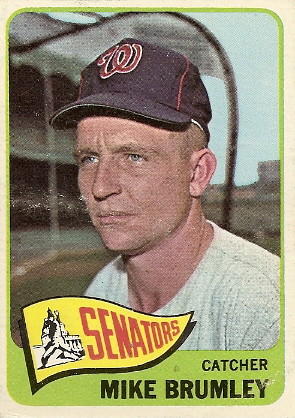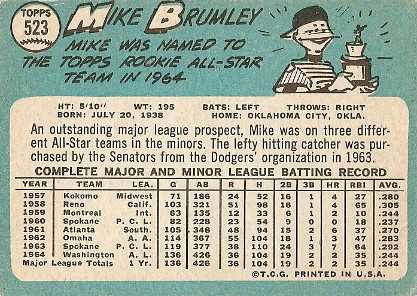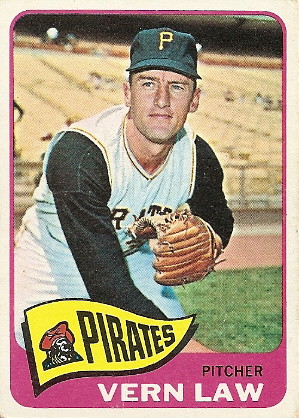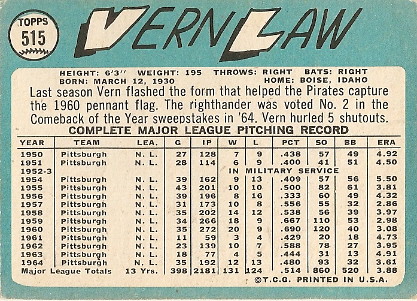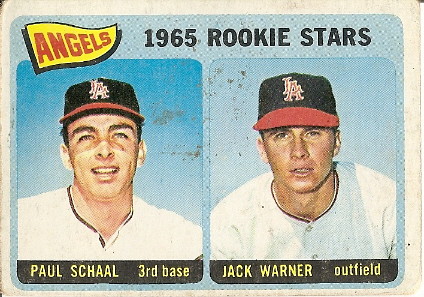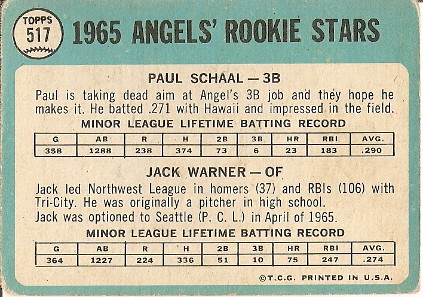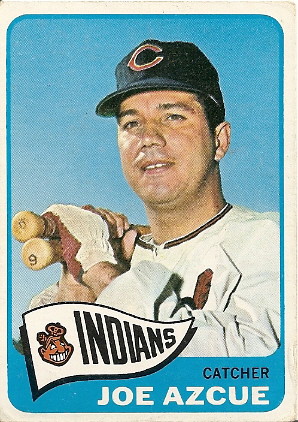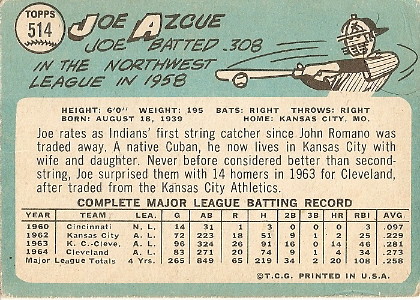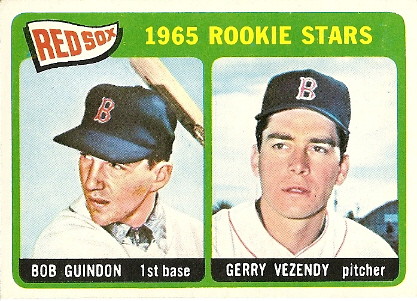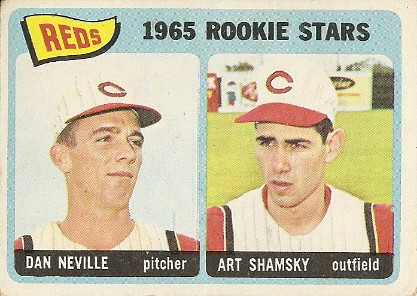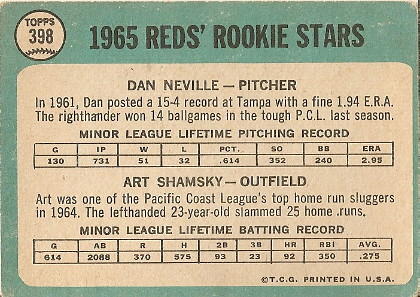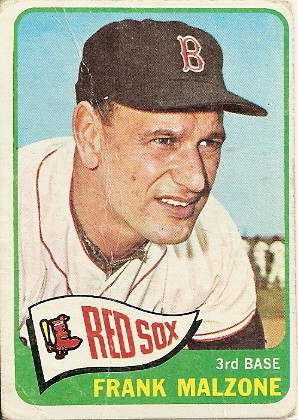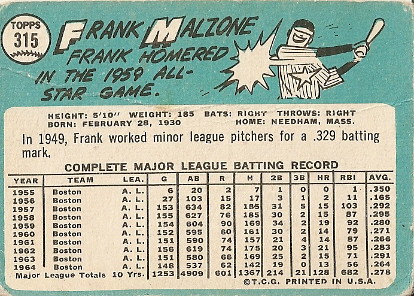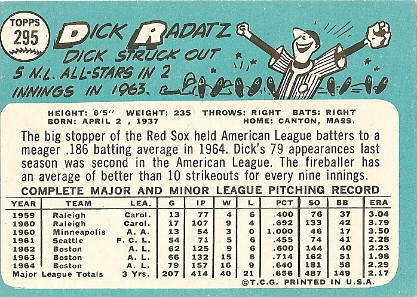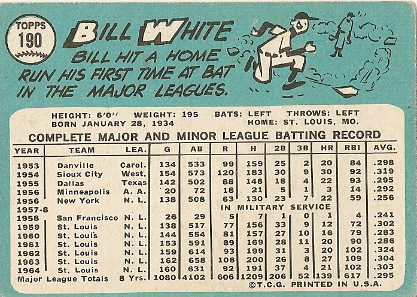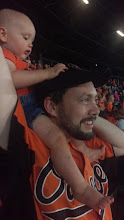So Rookiepalooza resumes here at The Great 1965 Topps Project, with a pair of Halos. After a couple of interesting backgrounds in our recent Rookie Stars cards, there's nothing here but the wild blue yonder. I suppose that's fitting for the Angels. It seems unusual that you can see so much of
Jack Warner's hat bill. I guess he's pulled his cap down low or something.
Paul Schaal looks like he got caught saying "cheese".
Fun facts about Paul Schaal:
-As the
B-R Bullpen helpfully points out, he is a member of the Baseball List of Rhyming Names, alongside such luminaries as Don Hahn, Larry Sherry, Lu Blue, Still Bill Hill, Mark Clark, and my personal favorite Greg Legg.
-Had a reputation as a good defensive third baseman and a patient hitter; despite a career average of .244, he walked more than he struck out (516 to 466) and compiled a respectable .341 on-base percentage.
-His first big-league hit came on
September 4, 1964. It was a single against Orioles pitcher and future Hall of Famer Robin Roberts.
-On
August 2, 1966, he entered a game against the Yankees as a pinch hitter in the ninth inning. He struck out, but remained in the game at third base and hit a game-winning inside-the-park home run in the 11th!
-Had his 1968 season cut short when he was beaned by Boston pitcher Jose Santiago on June 13. He would make two pinch-hitting appearances in August, but did not play again otherwise. The damage included a fractured skull, eye damage, and a punctured eardrum. Check out the mildly insensitive cartoon on the back of Paul's 1970 Topps card
here!
-Was drafted by the Kansas City Royals prior to their inaugural 1969 season and went on to be their primary third baseman for four and one-half years.
-Had a career year in 1971, playing all 161 games for K.C. and hitting .274 with personal bests in runs (80), doubles (31, trailing only Reggie Smith's 33 for best in the AL), home runs (11), RBI (63), walks (103), and slugging percentage (.412).
-In 1974, the Royals traded Schaal back to the Angels to create an opening at third base for a rookie named George Brett. Paul called it a career at the end of the year.
-After baseball, Paul became a chiropractor in Overland Park, Kansas.
Fun facts about Jack Warner:
-Is one of three major league players born in Monrovia, CA. Has all seven home runs hit by Monrovia natives.
-Signed with the Angels during their first year of existence. According to Warner, "They didn't even have a minor league farm system set up yet, and there was no place to send me." He worked out with the team in Los Angeles during homestands, and looked so good in the batting cage that they developed him as an outfielder rather than a pitcher.
-Turned heads with 75 home runs in his first three minor league seasons (1962-1964), including 37 longballs in 131 games at Tri-City in 1964.
-Opened the 1966 season with the Angels, and created a major buzz with a .345 average, 5 home runs, and 13 RBI in his first 15 games. However, he soon lost his stroke, and was hitting .211 with 7 HR and 16 RBI through 45 games. He played his last major league game on July 27.
-A 1967 trade to the Athletics did not snap Jackie out of his funk. From his demotion in 1966 through his final professional season in 1969, he did not hit above .224 at any stop, and failed to get on base at even a .300 clip. His top home run output in that span was 16.
-There are various claims around the Internet that Warner's struggles were linked to injuries. I found differing reports of a shoulder injury and/or a gash on the hand from collisions with an outfield fence in 1966, as well as a subsequent elbow surgery. As always, feel free to supplement my crack research in the comments.
